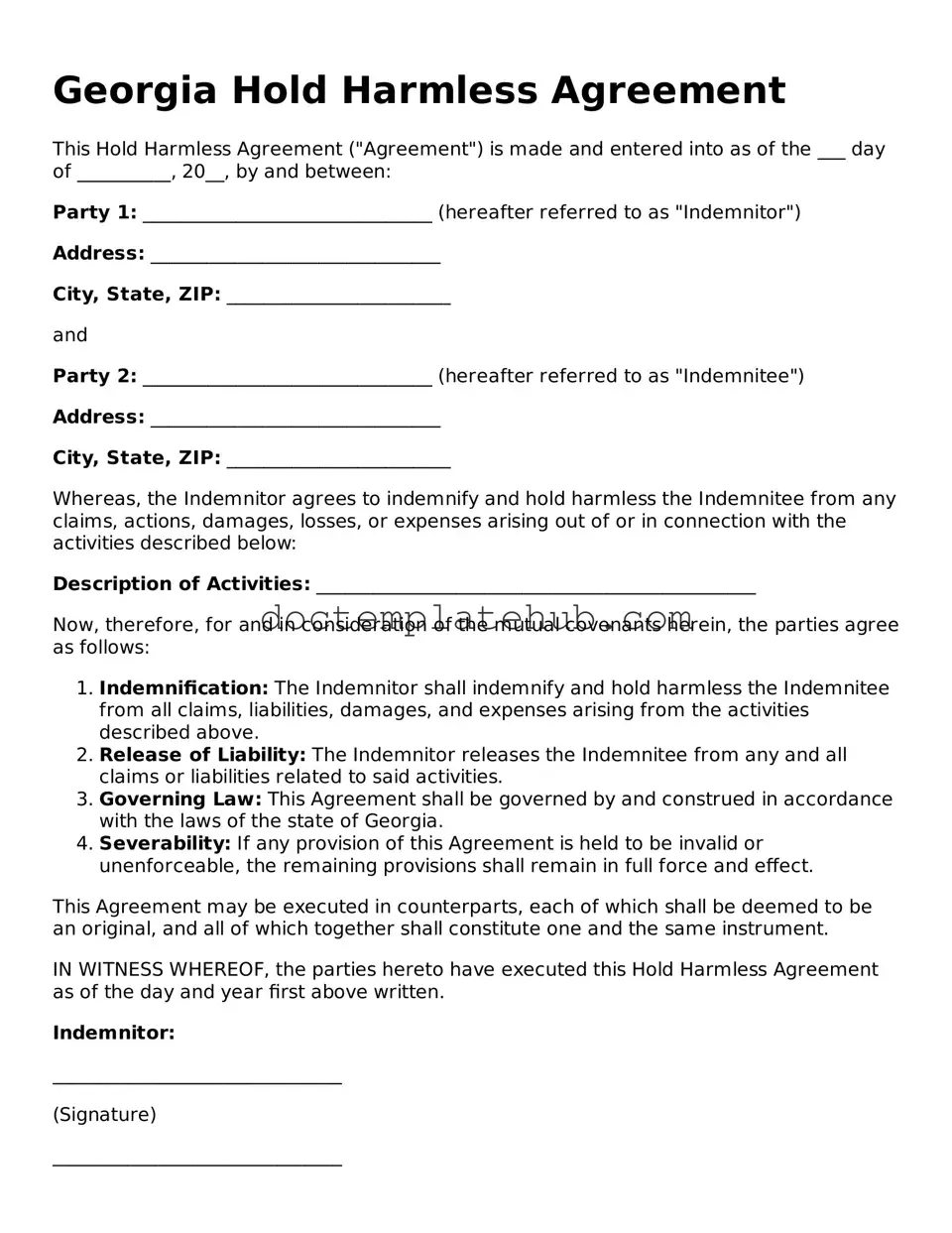The Georgia Hold Harmless Agreement is similar to a Waiver of Liability. Both documents serve to protect one party from legal claims or damages that may arise from certain activities. In a Waiver of Liability, an individual acknowledges the risks associated with a specific activity and agrees not to hold the other party responsible for any injuries or damages incurred. This type of agreement is commonly used in recreational activities, sports events, and other situations where participants may face inherent risks.
Another document that shares similarities with the Hold Harmless Agreement is the Indemnity Agreement. While both agreements aim to protect one party from claims, an Indemnity Agreement typically involves one party agreeing to compensate the other for any losses or damages incurred. This document often comes into play in business contracts, where one party may require assurance that they will be reimbursed for certain liabilities that arise during the course of a project or transaction.
A Release of Liability form is also akin to the Hold Harmless Agreement. This document releases one party from any future claims related to specific activities or events. Like the Hold Harmless Agreement, a Release of Liability emphasizes that the signer understands the risks involved and agrees not to pursue legal action against the other party. This form is frequently used in situations such as personal training sessions, adventure sports, or any event where participants may be exposed to potential harm.
The Consent to Participate form bears resemblance to the Hold Harmless Agreement as well. This document is often used in activities involving minors or vulnerable individuals, where consent from a parent or guardian is required. By signing this form, the parent or guardian acknowledges the risks associated with the activity and agrees to hold the organization harmless from any claims that may arise. It emphasizes informed consent and is crucial for ensuring that participants understand the potential risks.
Similarly, a Safety Agreement can be compared to the Hold Harmless Agreement. This document outlines the safety protocols and responsibilities of all parties involved in a specific activity. While it may not explicitly state that one party will be held harmless, it serves to clarify the expectations and safety measures in place, thereby reducing the risk of liability. Safety Agreements are commonly used in workplaces, construction sites, and events where safety is a primary concern.
The Professional Services Agreement also shares some characteristics with the Hold Harmless Agreement. This document outlines the terms and conditions under which professional services are provided, often including clauses that limit liability. While it primarily focuses on the scope of work and payment terms, it may also include indemnification provisions that protect the service provider from claims arising out of their services, similar to the intent of a Hold Harmless Agreement.
A Construction Contract can be likened to the Hold Harmless Agreement in that it often contains indemnity clauses. These clauses protect the contractor or property owner from liability for accidents or damages that occur during the construction process. The agreement outlines the responsibilities of each party and may include provisions that hold one party harmless for claims arising from the other party's actions, thus sharing a common goal of risk management.
Lastly, a Tenant Lease Agreement may also resemble the Hold Harmless Agreement, particularly in its liability clauses. Many lease agreements include provisions that require tenants to hold landlords harmless for certain incidents, such as injuries that occur on the property. This ensures that landlords are protected from legal claims arising from accidents or damages that may occur within the leased premises, similar to the protective nature of the Hold Harmless Agreement.
